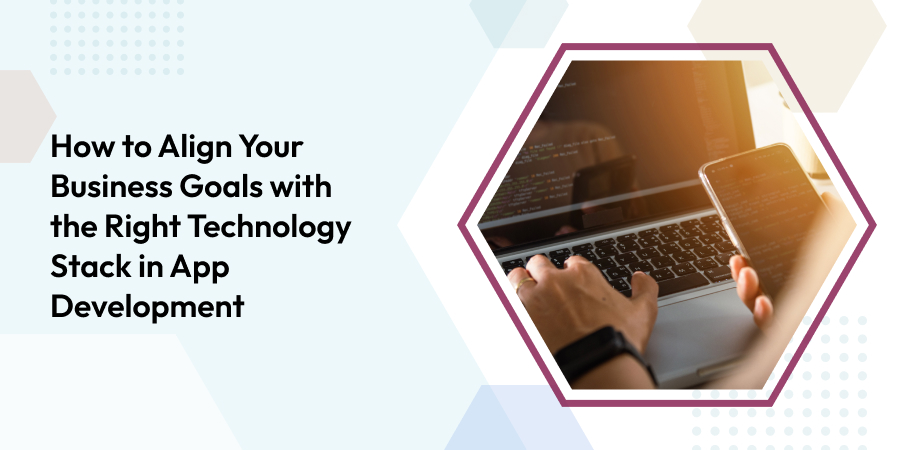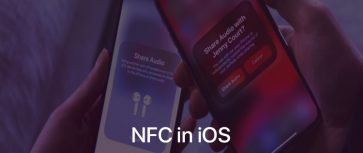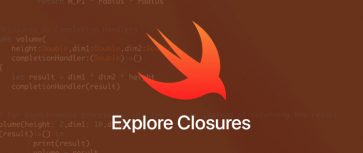Table of Content
Table of Content
How to Align Your Business Goals with the Right Technology Stack in App Development
It’s easy to develop a great idea for your business app. But with the major technological and digital upheaval in recent years, a great idea alone just won’t cut it. For your app to succeed, your business goals and the technology stack you use have to be in sync. The right technology stack for your app spells the difference between its ability to scale seamlessly with your growing consumer base and its constant struggle to meet demand.
If you are a product-driven company, mission-oriented nonprofit, or fast-growing marketplace, you will need your technology investment choices to align with your business strategy and goals. Therefore, in this article, you will come to know which kind of technology stack can bring the best effectiveness for your app so that it supports long-term success.
1. Understanding Your Business Goals
The process of picking the right technology stack for app development first involves having a clear understanding of the leading business objectives that you need to meet. Whether it is to achieve company growth, save on costs, or deliver a great experience to users, your business goals should serve as the foundation for all your technology-related decisions.
For example, if your priority is scalability, you need a tech stack that allows your app to easily handle a user load that grows through time. If it’s cost efficient, then get a tech stack that allows you to maintain your app’s performance with minimal operational expenses. Similarly, if user experience is at the top of your list, then your technologies should allow your app to be responsive and interactive.
Beyond these key objectives, you also need to take note of your target audience and industry-specific requirements. You need to look into what your target audience expects from you and what they like, then choose a technology stack that would make certain features of your app resonate with them. One example is offering them personalized experiences through your app.
Additionally, different industries may have their own set of regulatory requirements. The financial sector, for instance, is governed by unique data security standards. These standards should also influence your choice of technologies for your financial app.
2. What is a Technology Stack Anyway?
A technology stack or “tech stack” is the bevy of programming languages, frameworks, and software working together to build one app and keep it running. Think of it as the structure guide that determines how an app is structured, distributed for use, and kept running like a well-oiled machine. As you’d learn from having a web development or computer science online degree, a technology stack has three fundamental components: the front-end, the back-end, and database technologies.
2.1 Front-End Technologies
The front-end is what users see once they open your app. It’s also the part they interact with and experience directly when they use it. It includes the app’s overall design, layout, buttons, and navigational tools. Common front-end technologies include:
- HTML (HyperText Markup Language): This is the standard markup language used to create the structure of a web page.
- CSS (Cascading Style Sheets): This is used to style and design an app’s visual appearance, which includes the layout, the colors, and the fonts.
- JavaScript: This programming language is suitable for apps that require interactivity and dynamic content.
React, Angular, Vue.js, and other similar front-end frameworks and libraries enhance your app’s front-end development capabilities by providing reusable components. They also boast a structured way to build user interfaces.
Back-End Technologies
The back-end is at the core of your app and serves as its business logic. It takes care of its functionality, which includes data processing function and communication with the database. To put it simply, it is in charge of what is happening behind the curtains while the show is going on. It is responsible for tasks such as user authentication and the processing of payments. Your app’s ability to work in tandem and harmoniously with other services and other tools depends on these technologies, too.
The main components of back-end technologies include:
- Programming Languages: Commonly used languages for back-end development include Python, Java, Ruby, Node.js (JavaScript), and PHP.
- Frameworks: These provide a foundation for building and managing the server-side logic. Examples include Django, Spring, Ruby on Rails, and Express.
- Application Programming Interfaces (APIs): APIs allow different parts of the app to communicate with each other and with external services.
Database Technologies
The database is the repository for all your app’s information. Data is managed here. It acts as the vertebrae of the application and it ensures that all information is right there when it is needed and has to be retrieved.
There are two main types of databases:
- Relational Databases: Relational databases such as MySQL, PostgreSQL, and Oracle use structured query language (SQL) to manage data in a table-based format.
- NoSQL Databases: NoSQL databases such as Cassandra, Redis, and MongoDB handle unstructured or semi-structured data, offering more flexibility in terms of data storage.
2.2 How a Technology Stack Impacts App Development
Your technology stack impacts your app’s development process and overall success. A good choice of tech stack makes development times faster, app maintenance easier, and app performance better, while a poor one could lead to scalability issues and technical debt. A poor choice of tech stack may also make the hiring of skilled developers difficult.
Some key factors influenced by the tech stack include:
- Performance: Your app can run fast and smoothly if you pick technologies that are tried and tested to be efficient.
- Scalability: Your app can handle a rise in your user numbers and an increase in the data it processes if it uses a highly expandable tech stack.
- Development Speed: Some technologies are so simple that they offer faster development cycles. Pre-built components and community support also contribute to this development speed.
- Security: Different technologies come with different levels of security features and best practices.
3. Aligning Technology Stack with Business Goals
How do you align your technology stack with your business goals? The short of it is you focus on property choosing front-end technologies, back-end technologies, and database solutions for your app.
3.1 Selecting Front-End Technologies for User Experience
The success of any application is greatly associated with user experience. That’s why you must have a well-designed user interface, which means one that is intuitive and responsive, on top of looking appealing. It encourages engagement and results in user satisfaction. As such, your front-end technologies should be able to deliver responsiveness, interactivity, accessibility, and performance.
Select frameworks and libraries that enable responsive design as this ensures that your app can function well across different screen sizes and devices. Technologies such as Bootstrap and CSS Flexbox/Grid systems can help you achieve responsiveness.
For apps that need to be highly interactive, such as those with animations and dynamic content updates, you can use JavaScript frameworks like React or Vue.js. They boast tools that are powerful enough to build engaging user interfaces.
Meanwhile, front-end performance is essential to lessening load times and ensuring user satisfaction. For this, you can apply lightweight frameworks and efficient coding practices to make sure your app quickly and effectively delivers content.
You also need to make sure that the front-end technologies you use support accessibility standards. This allows all users to open and run your app. In effect, your user base broadens while you align with inclusive business practices.
3.2 Choosing Back-End Technologies for Scalability and Performance
You can expect increased traffic and user interactions as your business grows. So you need to make sure your application can handle these, along with data processing, without having its performance compromised in any way. This is where back-end technologies come in.
Choose a back-end framework that can scale horizontally or vertically as more and more users access your app. You can look into technologies like Node.js and Golang, which are suitable for scalable apps, thanks to their capacity to handle high-concurrency environments.
Your back-end language and framework also affect the speed of data processing and server response. For instance, languages like Python (with Django) and Java (with Spring) may deliver robust performance, but they require optimization for high-performance use scenarios.
Meanwhile, businesses that anticipate fast user growth or the need to scale specific parts of their app independently could benefit from a microservices architecture. This approach allows you to build small-sized services that are modular and flexible. Such services can be built, deployed, and scaled independently, one portion at a time.
Using a back-end technology with strong API support is highly advantageous if your app needs to interact with third-party services or other internal systems. RESTful APIs and GraphQL are common choices for efficient data exchange and flexibility.
3.3 Picking the Right Database and Storage Solutions
Data is at the heart of most modern applications, so having the appropriate database and storage solutions would support your business goals. This makes a significant difference, whether you need to handle large volumes of data, take care of data security, or optimize data retrieval times.
If your app deals with structured data, a relational database such as MySQL or PostgreSQL is a great choice. For unstructured or semi-structured data such as social media posts, you can use a NoSQL database like MongoDB or Elasticsearch.
Meanwhile, for applications that expect high growth or fluctuating data loads, a database that supports sharding (horizontal scaling) or clustering may be most suitable. NoSQL databases like Cassandra are designed to effortlessly scale across multiple servers.
Some apps also require real-time data access. In such cases, make sure data retrieval and processing are fast. As such, in-memory databases like Redis or Memcached are great choices as they can boost performance for read-heavy operations and they store data in memory rather than on disk.
Additionally, make sure your database solution aligns with your security requirements. This is especially necessary if your app handles sensitive data like financial transactions. For this, you need solutions that feature encryption, regular security updates, and access controls.
4. Common Mistakes to Avoid
There are common mistakes you need to steer clear of when selecting technologies for your app. One is making tech decisions that rely on what is new and popular or trendy instead of what is already tested and proven. When you do this, you are not giving much thought to the specific needs of your business. While the latest and newly popular frameworks or tools in the tech community are appealing, applying them for this reason alone can lead to issues down the road. You may realize belatedly that your chosen technologies aren’t well-suited to your app’s unique requirements after all.
Trendy technologies may still not possess the stability and community support that your app needs for long-term success. This could result in technical debt and additional maintenance costs, among others.
Another critical mistake to avoid is neglecting future scalability and developer expertise. As your business grows, your technology stack must be able to handle increased demand without significant overhauls.
It is important to choose technologies that scale easily and are well-understood by your development team. Choosing a stack that is too niche or unfamiliar can make it hard for your development team, and it can even deter you from forming such a team in the first place. Consequently, it leads to slower development cycles, challenges in keeping your app up and running always, or difficulties upgrading your app as your needs change.
You see, a web-related or computer science degree isn’t only one of the degrees that pay well, but it’s also one of the most in-demand and relevant in this day and age. Pursuing such a degree means getting a better grasp of these technology stack mistakes and pitfalls.
5. The Bottom Line
If you want a successful app that can last a long time in the market, use a technology stack that goes hand-in-hand with and supports what you envision for your business. Your technology decisions will directly contribute to the experience your app brings to its users, as well as your app’s performance and ability to grow along with your business. So carefully evaluate your organization’s objectives and choose technologies that support your unique needs because by doing so, you set the stage for a powerful, efficient, and flexible application.
When compared to other JavaScript frameworks, ReactJS is the best option for creating highly adaptable user interfaces. Since its introduction in 2013, it has revolutionized...
 Sep 5, 2024
Sep 5, 2024 



Comments
Leave a message...